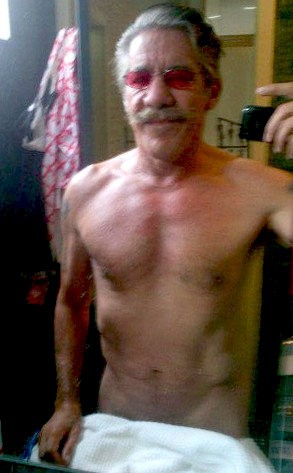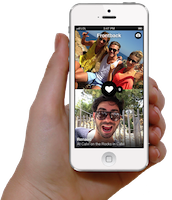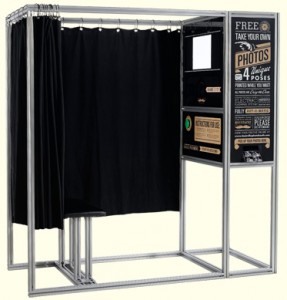 Social Media as Midden Heap
Social Media as Midden Heap
Historians and sociologists of the distant future will ponder the question of how and why post-millennial American culture infantilized its discourse about sex by adopting such motherese terms as “lady parts,” “uglies,” “baby bumps,” “baby mama,” “baby daddy,” and other childish euphemisms. They’ll speculate about the obsession with celebrities ― those among us who, in Daniel Boorstin’s trenchant definition, are “well-known for being well-known” ― and the cutesy juvenile nicknames devised for them: KimYe, RiRi, TomKat.

Miley Cyrus selfie, Instagram, 2013
They’ll ask why millions of people subscribed to Facebook pages and Twitter feeds that brought them floods of selfies from Justin Bieber, Snooki, Miley Cyrus, Ashton Kutcher, Beyoncé, et al. They’ll marvel at the exhibitionism of Heidi Klum, Paris Hilton, Anthony Weiner, Geraldo Rivera, and thousands of others. And they’ll scratch their heads when contemplating the oversharing of the citizenry at large, among them the ill-advised Depree Johnson.

Geraldo Rivera at 70, Twitter, 7-21-13 .
They’ll speculate on the connections between these phenomena. They’ll conclude, I suspect, that as a result of the synergistic confluence of digital imaging, the internet, and social media that metastasized the “selfie” and public diary-keeping, this culture became trapped in the Lacanian mirror stage of narcissism ― which they’ll likely refer to as narcy or amprop (for amour propre).
All of that has become part and parcel of what Lisa McInerney calls “the commodification of intimacy.” This represents the Janus face of western society today, in which we find it outrageous that the government scoops up terabytes of our private information like a baleen whale sucking in plankton while, at the same time, countless numbers of us disgorge to our 5000-plus Facebook “friends” or Twitter followers, at 10-minute intervals, what and where we’re eating, buying, watching, listening to, reading, bullying, fucking, pooping, and who we’re doing it with and to.
Not at all what Socrates had in mind, I dare say, when he recommended living the examined life. And not the behavior of people with a firm grip on the concept of privacy. Nonetheless, that’s the state of lens culture at the close of 2013. According to Oxford Dictionaries, which named “selfie” their word of the year for 2013, frequency of use of this word ― most commonly in conjunction with such an image ― has increased in a year by 17,000 percent. (Disambiguation: Oxford Dictionaries is not the venerable Oxford English Dictionary or OED.)
Archaeologists use the term “midden heap” to describe “a mound or deposit containing … refuse that indicates the site of a human settlement.” What a vast, rich trove we’ve begun to pile up for future study.
Selfie Apocalypse
Our relation to the selfie pandemic can serve as a measure of our cultural condition. Despite the fact that its new rubric trivializes both the act and the resulting images, self-portraiture not only has gone mainstream, as I discussed in my previous post, but some of its makers have begun to specialize, niche-marketing themselves in the hope of distinguishing themselves from the herd. Others have identified or originated a theme and invited contributions thereto. Meanwhile, consumers have started to do the same, effectively curating thematic online exhibitions (and sometimes brick-and-mortar shows or printed books) from the flood of images.

Dzhokar Tsarnaev, Twitter profile self-portrait, n.d.
If, for convenience’s sake, we date the beginning of the selfie apocalypse at the February 2004 grand opening of Facebook, we have just shy of a decade’s worth of cultural experience of widespread use of social-media platforms that enable easy, rapid online posting and sharing of self-portraits ― Flickr, Instagram, Twitter, et al. Most of what followed no one would judge as memorable or (except quantitatively) significant. In retrospect, the year’s most startling selfie, Dzhokar Tsarnaev’s, acquired a resonance it didn’t enjoy when it first went online, especially after it appeared as a Rolling Stone cover. But most online selfies aspire to transience ― made as trivia, meant for forgetting.
The act of singling any selfies out for critical attention thus seems pointless, even perverse, akin to editing a selection of the year’s best tweets or the winter’s best snowballs. What were the 25 best potato chips you ever ate?
I tend, therefore, to engage with selfies as a genre of vernacular image ― relatively new as such, in that selfies as currently defined did not make up a sizable portion of amateur-photo output prior to the advent of social media. It seems more productive to think of them generically, to look at their evolving cultural function, to divide them into subsets, than to cherry-pick favorites on the basis of personal taste (because I can’t think of a criterion that makes sense).
After all, appreciation of selfies inevitably involves developing an appetite for fails as well as winners, with no readily apparent distinction between the two. Even if the curatorial eye behind any selection of them shows some visual sophistication (it rarely does), I find myself more inclined to just dive in and sift for myself. Consider these culls, for example: “Girl With A Camera” (like it says, pictures of young women with cameras, often making selfies); “Mirror Selfies”; “Making Monday Better One Selfie At A Time” (sexy-girl selfies, PG-13); Nude Selfies 18 and “Sinful Selfies,” both involving full nudity. You’d do just as well by typing in similar search terms yourself and browsing the results.

Kurd Men for Equality, Facebook, screenshot 12-16-13
When it comes to thematic collations, the most prominent of these presently, thanks to Barack Obama’s contoversial selfie moment at the December 10 Mandela memorial event in Johannesburg, is the improbable Selfies at Funerals ― otherwise a small, eccentric aggregation. I do note, with real interest, the emergence of sites that put the selfie to use as a vehicle for collective social activism. See for example, the Facebook page KurdMenForEquality, which gathers selfies of “Kurdish men in drag” in order to “promote feminism in the region,” and another Facebook page, The uprising of women in the Arab world, which solicits self-portraits of women holding up signs supportive of the rights of Arab women.
When individual selfie-makers produce bodies of work that stand out, generally they’ve done nothing more than choose and repeat some small idea that depends heavily on its cuteness quotient ― and cute has a very short shelflife. Japanese blogger Keisuke Jinushi has invented the “Hitori date” (one-man date), creating a fictional girlfriend for himself and documenting their relationship through the ingenious use of wigs, nail polish, and other props. Happily single Suzanne Heintz from Denver, Colorado creates holiday cards featuring staged photos of herself with manikins who make up her fictional family. Natsumi Hayashi, a/k/a “Yowayowa Camera Woman,” publishes an online diary that includes many “levitating self-portraits” catching herself in mid-leap.
We achieved the first viral interspecies selfie with the photobombing rodent of Banff National Park, Canada in 2009. This generated a meme, and a consequent flood of images incorporating the same squirrel, thanks to online apps that became known as “The Squirrelizer.” The original Squirrelizer has shut down, but others have kept the idea alive. Indeed, there’s now an app for that.
Camera Usage Drives Technology

Frontback app, ad, 2013
Whatever I think of the selfie phenomenon and its tsunami of images, I don’t expect it to slow; quite the opposite. Assuming that the popularity of this form of image-making and image-sharing continues and grows, as seems likely, then it will drive the technology. Some of those consequences will provide all picture-makers with options they haven’t had before, such as the Frontback app that combines pictures of what’s on both sides of the cellphone in a single file (assuming it has two cameras).
It will also reconfigure and revitalize some older photo technologies. Though the photo booth fell into disuse at the outset of the digital era, and seems both archaic and redundant in an environment in which just about everyone carries a camera-equipped cellphone, it has made a roaring comeback.

Magbooth™, 2009
I find the attenuated PDN PhotoPlus Expo increasingly disheartening, but one dependable bright spot is the presence of one or more makers of digital photo booths that not only spit out actual prints of your images but create online albums thereof. They’re hyped as add-ons for social events ― conference, weddings, birthday parties ― and seem to have found a niche big enough to support a number of different brands.
At the same event, and in marketing campaigns, makers of instant-print digicams and compact digital photo printers (such as the Canon Selphy) emphasize selfie usage.
Studying the Selfie
Of this we can feel confident: Given the archiving of the web by various entities, the selfie has already become the most thoroughly documented tendency in photography of all time. Doubtless it will evolve its own serious curators and scholars. Thoughtful consideration of its implications abounds; start with Christine Erickson’s “The Social Psychology of the Selfie,” posted at Mashable on February 15, 2013; Elizabeth Day’s “How selfies became a global phenomenon” in the July 13, 2013 Observer; and Jenna Wortham’s “My Selfie, Myself,” in the October 19, 2013 New York Times.

A. D. Coleman, digital photo booth self-portrait, 12-19-10.
As I always have, I consider it a good thing that a form of photographic imagery, and the technology through which it’s generated and distributed, has provoked a wide-ranging and often substantive public dialogue. The more of that we get, the better.
Meanwhile, a new scientific study indicates that the act of taking a picture has a negative effect on the picture-taker’s ability to remember the subject and/or situation of the image. Dr. Linda Henkel of Fairfield University in Connecticut described it as the “photo-taking impairment effect.” Thus all this recording of self may actually result in the erasure of self. And another study indicates that “excessive photo sharing and sharing photos of a certain type makes almost everyone like you less.” Now that’s irony.
(Part 1 I 2)
•
This post supported by a donation from the Estate of Lyle Bongé.






Leave a Comment